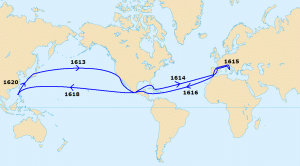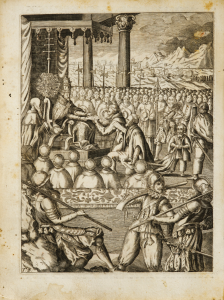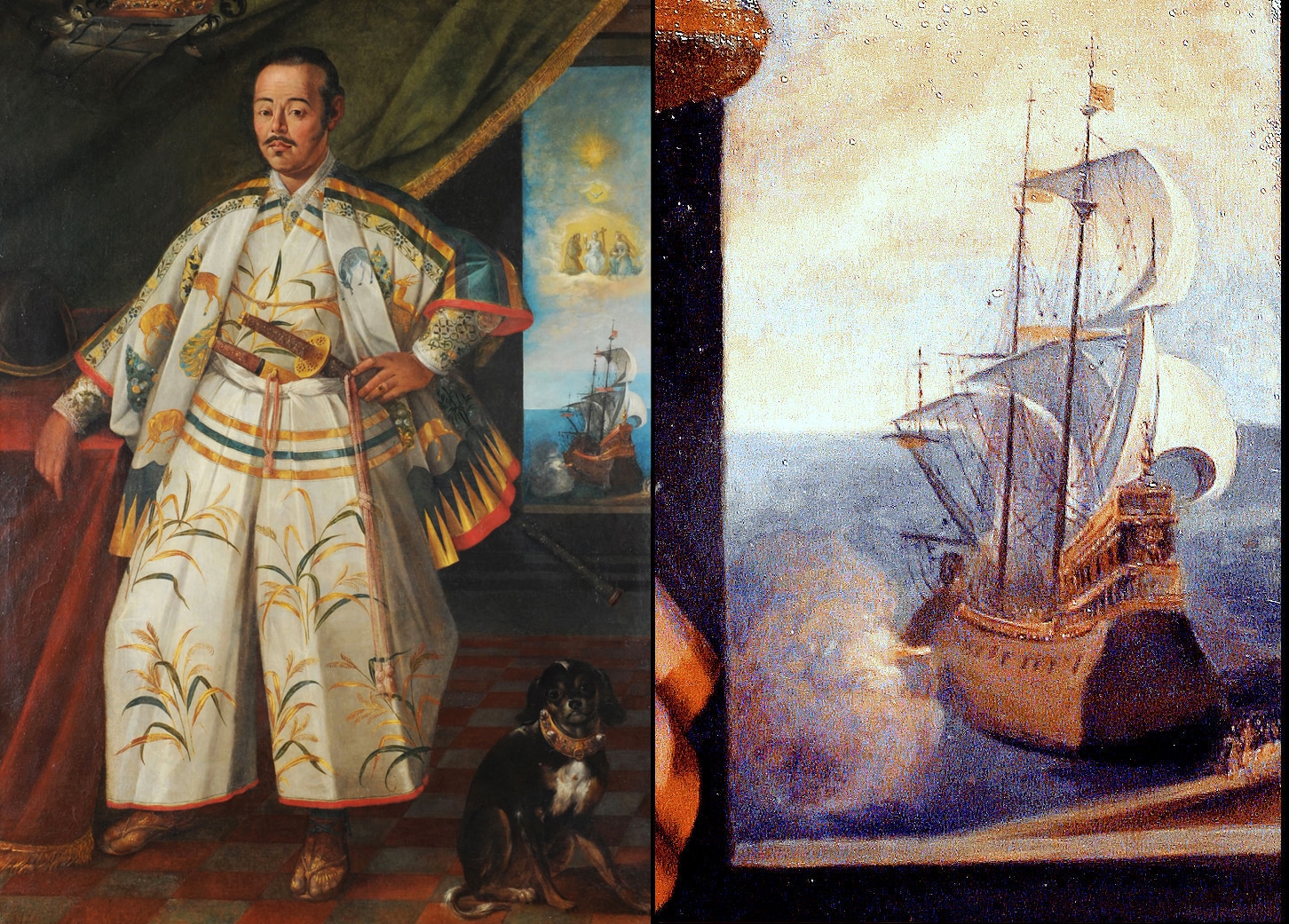The year is 1614. The place is Acapulco, Mexico. Hasekura Tsunenaga, a noble warrior from Japan, was on a mission to Europe. He was not alone. Along with him were about 180 people, including merchants, sailors, and Christians.
Why were Samurai in Mexico?
The first diplomatic exchanges between Spain and Japan followed the shipwreck of the “San Francisco” off the coast of Japan in 1609. The ship was on route from the Philippines to Mexico, both Spanish colonies at the time, and was blown off course in a storm. Survivors of the shipwreck were treated well and sailed back to Mexico on the first western-style ship built by the Japanese.
Onboard were also several Japanese representatives, who established an official contact with the Spanish in Acapulco.
A Japanese embassy in Rome
5 years later Hasekura was sent to Mexico by Date Masamune, a powerful lord in northern Japan. Date Masamune wanted to open Japan to the world and learn from other cultures. Possibly he also wanted to protect the Christians in Japan, who were facing persecution from the shogun, the military ruler of Japan. Therefor he asked Hasekura to lead a delegation to Spain and the Vatican, via Mexico, to ask for their help and support and to establish an embassy. Most likely, Date Masamune also wanted to get his hands on foreign technology to help him establish a stronger power base.

The travels of Hasekura Tsunenaga. User:PHGCOM / User:Jrockley, Public domain, via Wikimedia Commons
The journey took the delegation eastwards by ship across the Pacific Ocean. An arduous trip that lasted for around 3 months until they finally reached Mexico, then part of the Spanish Empire. After travelling overland, they finally reached Acapulco, where they met with the Spanish governor. Generally, they were welcomed with both respect and curiosity.
The fight with the samurais
But there was also some tension. One day, fights erupted between Japanese samurai and the Spaniard conquistadors, reportedly because of disputes regarding the handling of presents from the Japanese ruler.
This resulted in the stabbing of a Spaniard conquistador!
One of the witnesses of this incident was Chimalpahin Quauhtlehuanitzin, an Aztec nobleman and historian who lived in Mexico City. He wrote about Hasekura and his embassy in his annals. Regarding this event he wrote:
“Señor Sebastián Vizcaíno is also still coming slowly, coming hurt; the Japanese injured him when they beat and stabbed him at Acapulco, as became known here in Mexico, because of all the things coming along that had been made his responsibility in Japan”.”
Señor Sebastián Vizcaíno had been in trouble with the Japanese before. In 1611 he escorted a Japanese delegation back from Mexico to Japan and visited with the reigning Shogun, Tokugawa Hidetada. However, the relationship quickly soured due to Vizcaínos complete disregard for proper court etiquette, and he had to leave.
So, maybe the encounter with samurais and ensuing stabbing also had to do with some lack of respect? Who knows.
The journey back
Hasekura did reach Spain and traveled to Madrid, where they met with King Philip III of Spain, who treated them well. He gave Hasekura gifts and honors and arranged for him to get baptized. The King also gave Hasekura permission to go to Rome and meet with the Pope, which he eventually did.

Hasekura Tsunenaga and Luis Sotelo kneeling for an audience with Pope Paul V (Paulus V) on November 3, 1615, Public domain, via Wikimedia Commons
Once there, he presented the Pope with two gilded letters, one in Japanese and one in Latin. It was a request for a trade treaty between Japan and Mexico and sending Christian missionaries to Japan. These letters are still in the Vatican archives to this day.
Two years later, the Japanese left Spain and headed back. Remarkably, documents indicate that some may have stayed behind. Evidence of this might be that in modern Spain, there are families with the surname “Japón”.
When Hasekura finally returned to Japan in 1620, he found his homeland changed. Just two days after the return, an edict against the Christians was introduced. All Christians were ordered to abandon their faith, or they would be exiled if they were nobles, and killed if they were citizens, peasants or servants. Just 40 days later, the first executions of Christians began.
Hasekura was forced to renounce his baptism and his faith. He died in 1622 of illness, without seeing any benefit from his long journey.
So, the first encounters between the Japanese and Spanish were not an entirely happy one. And around that time Sakoku, the 265 years of Japanese isolation, began with little or no contact with Western Countries.

